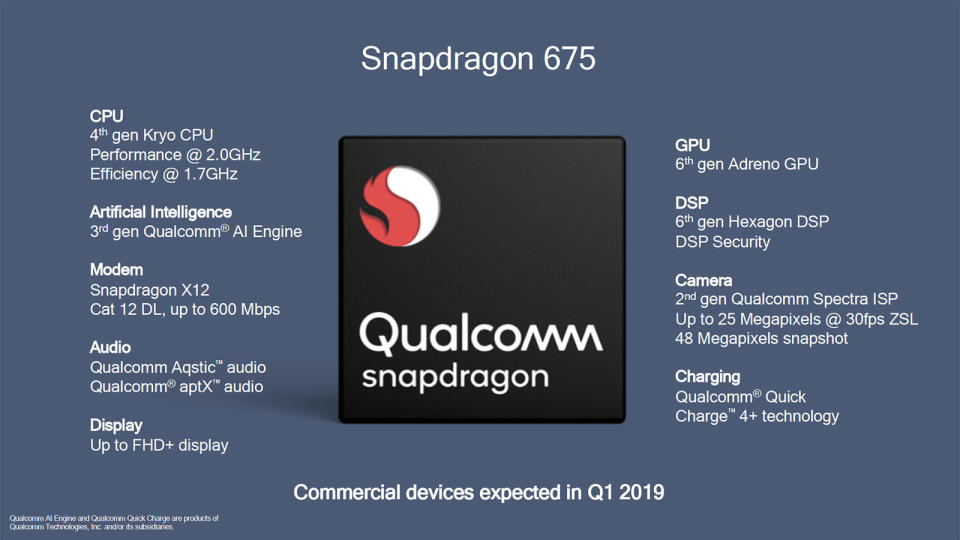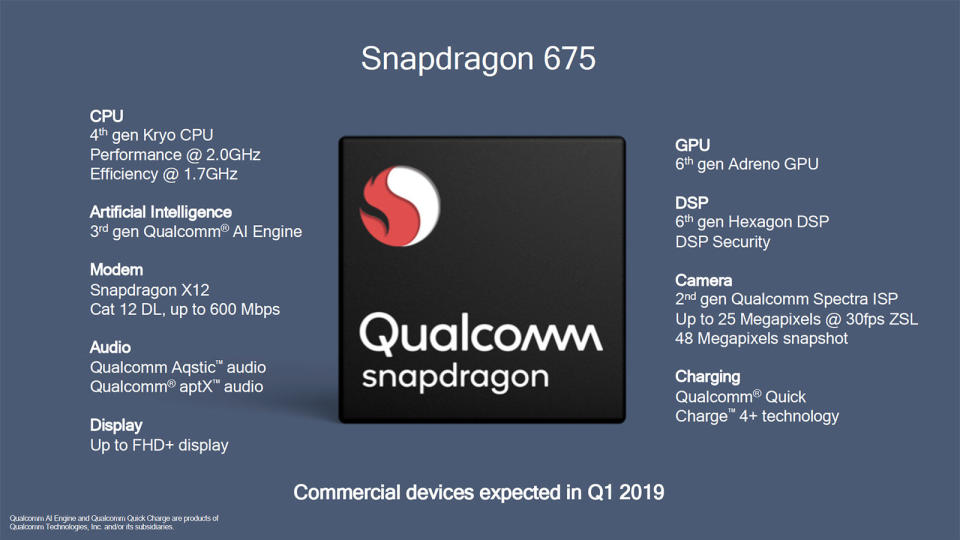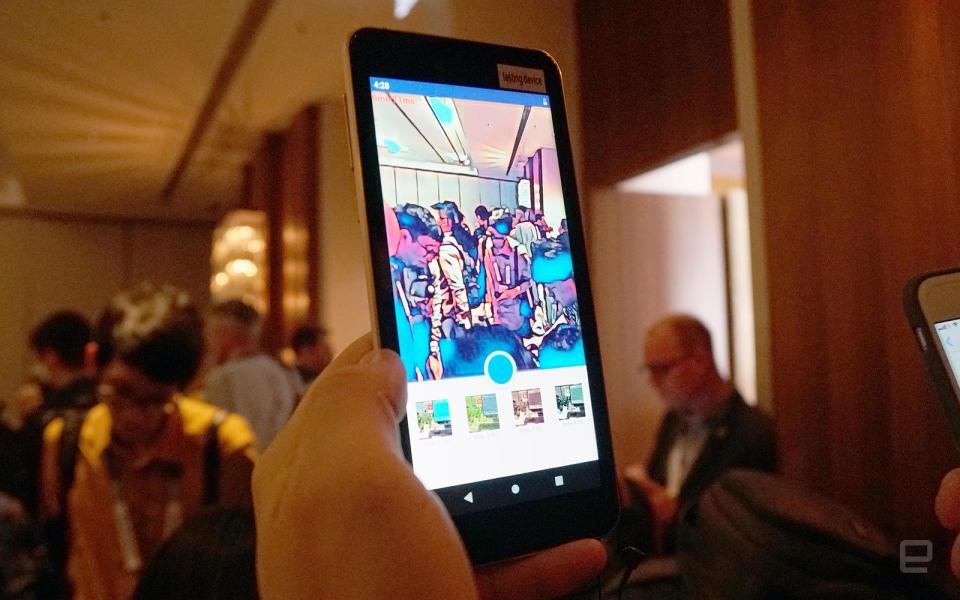Qualcomm's Snapdragon 675 rides the multi-camera and gaming trend
It's one way to create more premium mid-range smartphones.
It's only been almost a quarter since Qualcomm launched its Snapdragon 670 mid-range chipset, but today, the company is already bringing out a slightly beefier Snapdragon 675, which is clearly designed with three smartphone trends in mind: Gaming optimization, multiple cameras and AI-enhanced features (including face unlock).
Announced at the 4G/5G Summit in Hong Kong, the Snapdragon 675 features Qualcomm's brand new fourth-generation Kryo CPU -- the Kryo 460 with two high-power 2GHz cores and six low-power 1.7GHz cores -- which apparently gives a notable boost to its everyday performance and gaming performance. For instance, compared to the Snapdragon 670, the new Snapdragon 675 is claimed to launch games 30 percent faster and offers 35 percent faster web browsing.
In the case of gaming, the Snapdragon 675 also leverages from further software optimization for smoother gameplay, along with prioritized connectivity to ensure minimal interruption. Qualcomm listed PUBG and King of Honor being two of the handful of games that already benefit from these features, with the latter title even able to run at up to 60 fps -- not bad given that the GPU is just a mid-range Adreno 612, though we shall see whether it runs just as well outside of the lab, especially when this chipset is fabricated using an 11nm LPP process instead of the finer 10nm.

With smartphone manufacturers adding more cameras to their devices these days, Qualcomm sees this as an opportunity to sell a chipset that rides this trend. To do so, the Snapdragon 675 uses a Spectra 250L image signal processor to support a triple camera -- one that can seamlessly switch between telephoto, wide angle and super-wide angle for a 5x optical zoom -- on either side of a phone. This wasn't possible with the earlier Spectra 250, even though it could already connect up to six different cameras in any configuration.
In addition to the same old single-cam 25-megapixel still capture with zero shutter lag (30 fps), this Spectra 250L has gained a 48-megapixel snapshot mode to please manufacturers who want to offer something bolder. Also new here is native support for portrait mode (bokeh) with HDR, as well as limitless 720p slow-motion video capture at a whopping 480 fps -- a first for a Snapdragon 600-tier platform. Other than that, you'll find the same support for hybrid autofocus, 4K video capture at 30 fps, Motion Compensated Temporal Filtering and Multi-frame Noise Reduction with accelerated image stabilization.
Finally, AI. This was the main highlight of the earlier Snapdragon 670 with its multi-core AI engine (consisting of the Hexagon 685 DSP, Kryo CPU and Adreno GPU), and back then the focus was on improving battery management, capturing better photos and enhancing voice recognition for toggling smart assistants. This time round, the Snapdragon 675 is using AI to also enable more secure yet faster face unlock -- apparently up to three times faster than the Snapdragon 670, with a one-to-a-million false acceptance rate. Even voice recognition sees a 10 percent higher accuracy here than with the earlier chipset, according to Qualcomm's own tests.

In another use case, Qualcomm partnered with AI specialist SenseTime to create a "style transfer" camera demo: You can select one of the many preset artwork styles -- be it classic Chinese painting, Picasso, van Gogh or others -- and see it come to life in a live camera view. The live demo I saw after the briefing was quite responsive, and it probably would have been even more effective in a better lit environment.
Connectivity-wise, it's still the same Snapdragon X12 LTE modem with up to Cat 15 (600Mbps) for downlink and up to Cat 13 (150Mbps) for uplink, along with support for dual SIM dual VoLTE. There's also 802.11ac WiFi and Bluetooth 5.0. If all goes well, the first commercial devices carrying this Snapdragon 675 chipset should show up in Q1 2019 which is soon -- manufacturers will definitely want in well before any of these trends die down.





